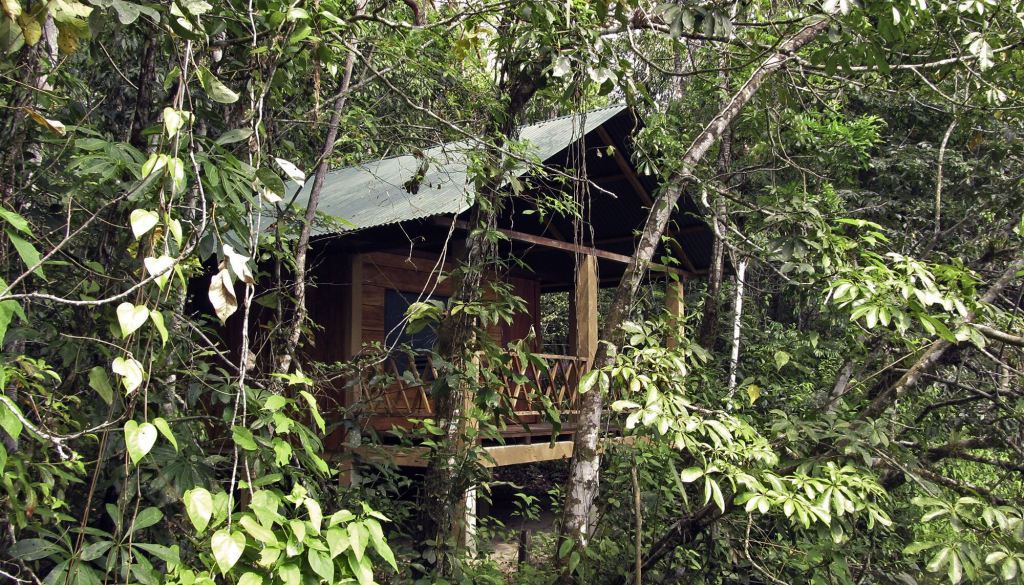At #10: A visit to Toniná
Although my last visit to Toniná was a while ago, I still remember the former Maya city well. A unique and beautiful site.
It’s a relatively small Maya site, but the central temple-complex or Acrópolis is enormous. Toniná must have been a considerable place in its blooming days.

The Acrópolis – which actually is a gigantic pyramid with seven terraces – reaches to the heavens. It’s 74m/ 243 ft high. Higher than, for example, the Pyramid of the Sun of Teotihuacán in Central Mexico.
Two visits to Toniná
I visited the site of Toniná twice in the past.
The first time was in 1992, when I travelled with my future wife Wendy through Mexico & Guatemala for three months. It was the second Maya city I ever visited, after my visit to Palenque a few days earlier. It was enough to get hooked forever on the fascinating Mundo Maya.
The second visit to Toniná was in 2001. I lived & worked in Guatemala at the time and during the Summer I visited Chiapas, Mexico. (This time not only accompanied by Wendy, but also our little daughter Lisa, who was 4 at the time.)
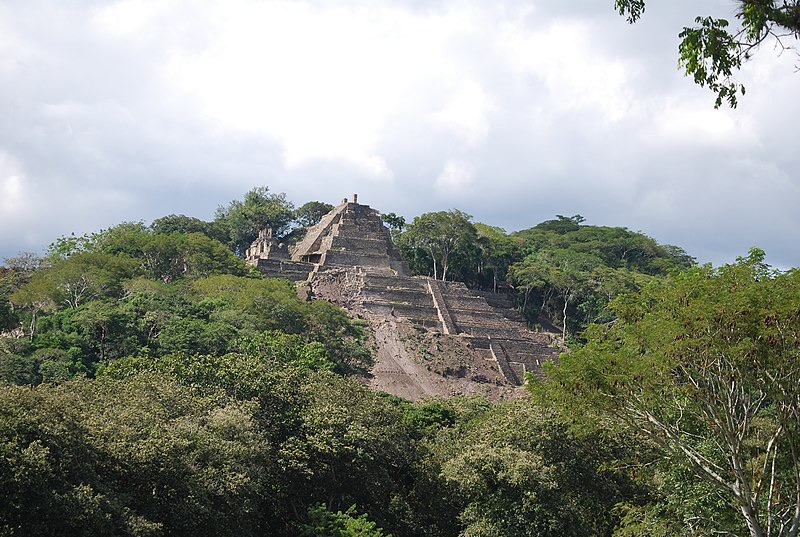
- Both times I took pictures of Toniná, but they got lost in time. That’s why I mainly use images shot by others in this post (after asking their permission). Below every picture I will mention its creator.
- Of course, I’d like to visit Toniná again asap to take my own pictures. For the time being, many thanks to the people who helped me out.
Before you read on:
- IMPORTANT: Throughout this post you’ll find affiliated links provided by affiliate marketing platforms like Viator, GetYourGuide, Expedia & others. Links & ads that may help you plan your next trip to Yucatán.
- If you click on them & buy a ticket for a museum, book a tour or rent a bike a small commission of your purchase will go to me (paid by the provider, without any extra cost to you).
- If you want to learn a little bit more about me, the blog writer, click on: Better call me Art.

A short history of Toniná
Toniná means “House of Stone” in the local Maya language (Tzeltal). Its original name was probably Po or Popo, which means “White” or maybe “White city”.
The city is located on the Western edge of the former Maya territory. 64km/40m south of Palenque in nowadays Chiapas, Mexico. Its biggest arch-rival in the Late Classic Period, when both cities reached their peak.
Rediscovery of Toniná
Toniná was rediscovered for the outside world in the 1830s. Soon thereafter the temple ruins were visited by the famous North American explorer John Lloyd Stephens & his British travel companion Frederick Catherwood (1840).
An adventurous couple that left us two beautiful 2-volume travel books about their journeys through the Maya World. Popular works that confronted many interested readers in the US & Europe for the first time with the fascinating Mundo Maya (See also my Introduction to the Maya World).


A Classical Maya City
Toniná experienced its heyday between the 6th and 9th century AD.
As far as we know there was an almost continuous rivalry with nearby Palenque.
At the time both cities were backed up by the bigger Maya cities to the East. That is, Palenque by Tikal and Toniná by Tikal’s arch enemy Calakmul.
A rivalry that left some historical records – images & inscriptions – on the temple walls in both cities.

Like for example, the fact that in 687 AD the ruler or ajaw of Palenque, K’inich Kan Bahlam II – son of the Pakal the Great – managed to capture the ruler of Toniná (Generally known as “Ruler 2”).
- That is, warriors of Palenque captured Toniná highest authority, took him to Palenque where he – on a special occasion – was offered to the gods.
Almost a quarter of a century later – in 711 AD – it was Toniná’s turn. In that year their troops managed to capture the highest ruler of Palenque – Kʼinich Kʼan Joy Chitam II, also a son of the Great Pakal. Instead of killing him though, it seems they kept him captive for a decade.
- It’s unknown why Toniná chose this remarkable strategy. Probably it was a way to keep their main rival under control. Anyway, after about 10 years the former ajaw reappears in the records of Palenque. Without knowing if he ruled again as Palenque’s highest authority or was still bound to the rules set by Toniná.
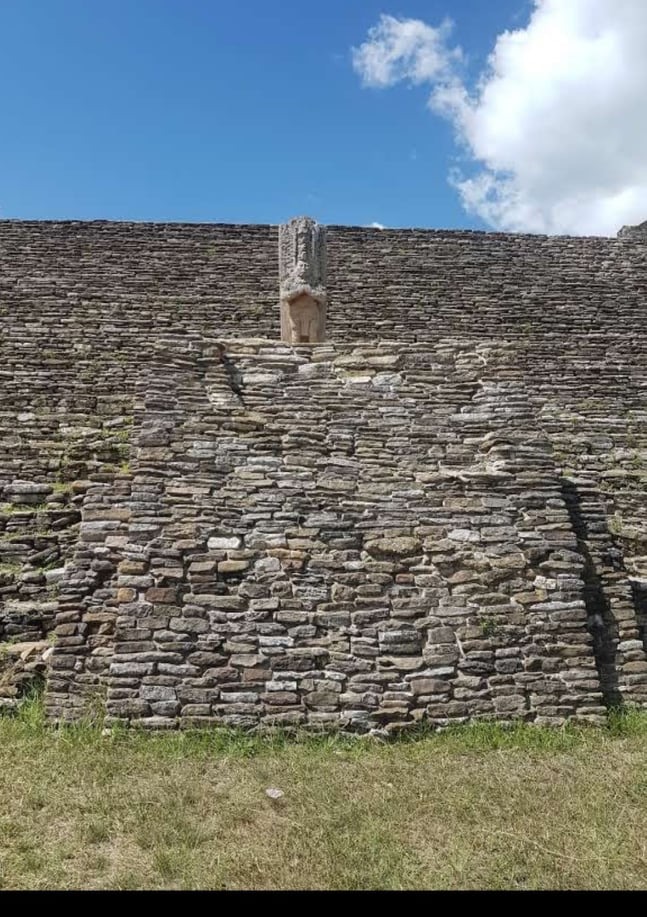
A renewed visit to Toniná
As mentioned above, a renewed visit to Toniná is high on my Bucket list.
Just a few years ago I visited the beautiful state of Chiapas again. This time, coming in from Yucatán. I only found time to visit Palenque, Yaxchilán & Bonampak. All three amazingly beautiful places and high up in my Personal Top #15 of Maya sites.
Too bad I couldn’t include Toniná, but that – at least – gives me one more reason to go back to the beautiful state of Chiapas.
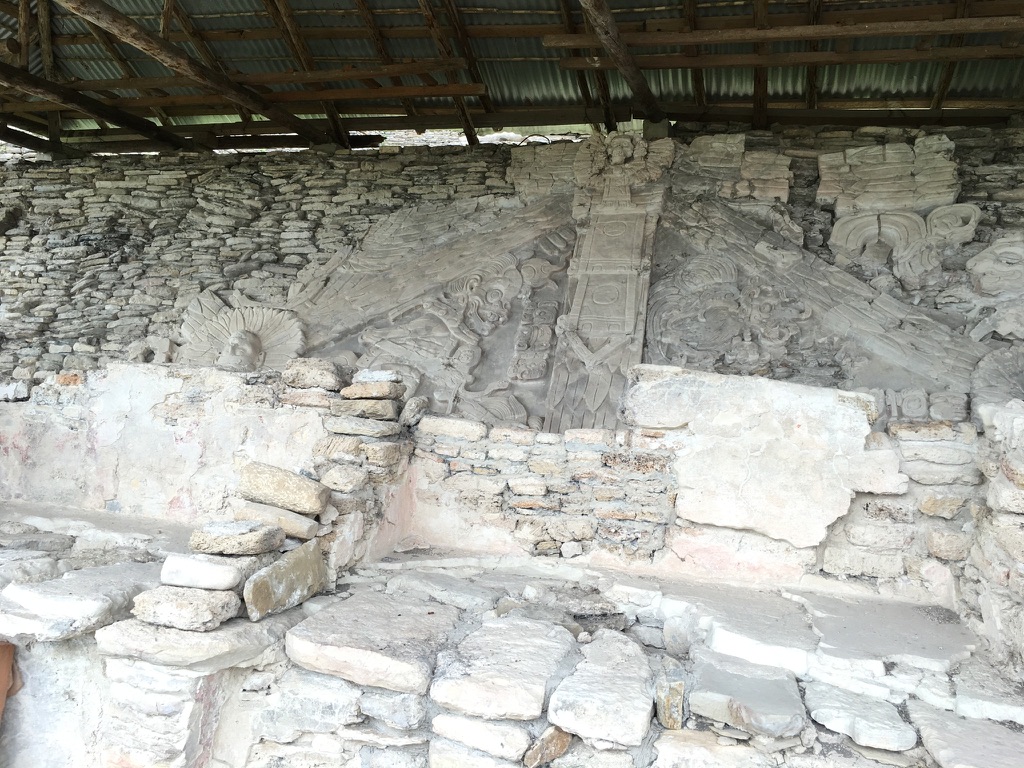
sculpture. Unfortunately a big part of this artwork is missing. Nevertheless, it’s one of the highlights of the Maya site of Toniná (Picture taken by Giovanni Agostino Frassetto, Italy).
Tips for your visit to Toniná
Visit Toniná – Getting there
Most people visit Toniná on their way from Palenque to San Cristóbal or vice versa.
If you have your own car the site is only 20 minutes away from the little town of Ocosingo. A place you’ll pass on the way.
A good option for sure. But if you have the time, I’d recommend you to stay overnight in Ocosingo. It’s a friendly place with a few basic hotels & some good authentic “mamita”-restaurants.
Staying overnight not only makes it possible to explore Toniná at your leisure. It also gives you the chance to get to know a smaller typical Mexican city.
Where to stay in Ocosingo
The best place to stay – relaxing enough to even consider staying a few nights – is the Campamento Rio Lacanja. This hotel provides basic, but clean cabins in a natural surrounding.
Click on the following link to learn more: Campamento Rio Lancanja
Visit Toniná – On a tour
Alternatively you can visit Toniná on a guided tour.
Click on their names to learn more:
GetYourGuide offers:

Viator offers: A full day-tour to Toniná from either San Cristóbal de Las Casas or Tuxtla Gutiérrez

Visit Toniná – Further Tips
- Bring drinks & snacks. Toniná isn’t located in a tropical area – like Copán, Tikal, Yaxhá or Uxmal – but still, it’s a high climb to the top of the Pyramid.
- Visit the small, but beautiful site museum of Toniná. It’s always an extra when a smaller site has its own museum nearby.
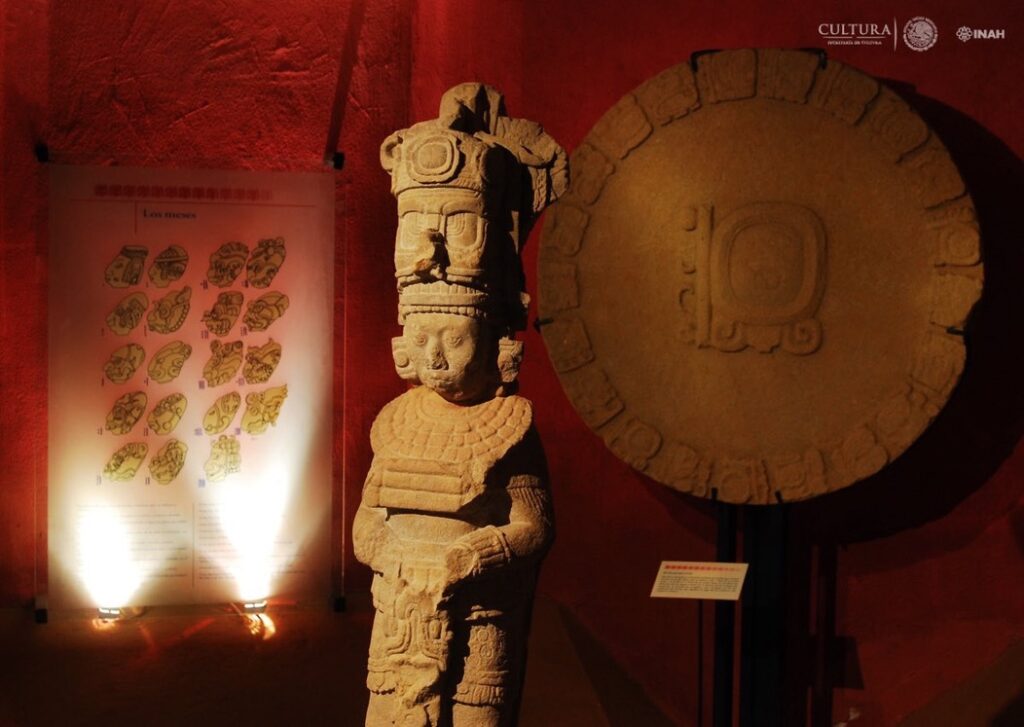
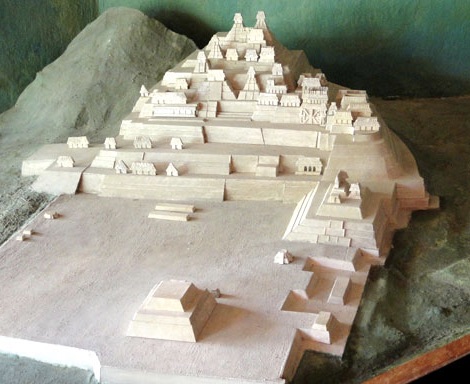
.
Photo impressions of Toniná
.
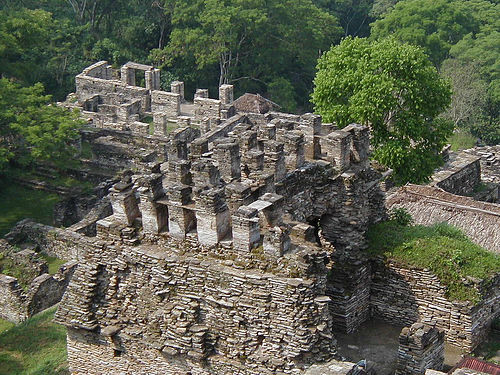
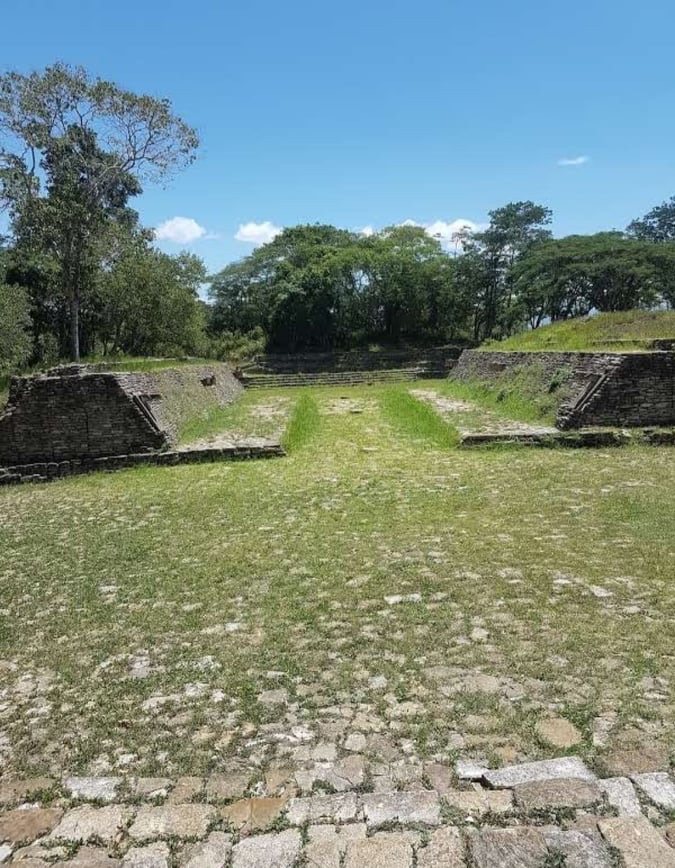
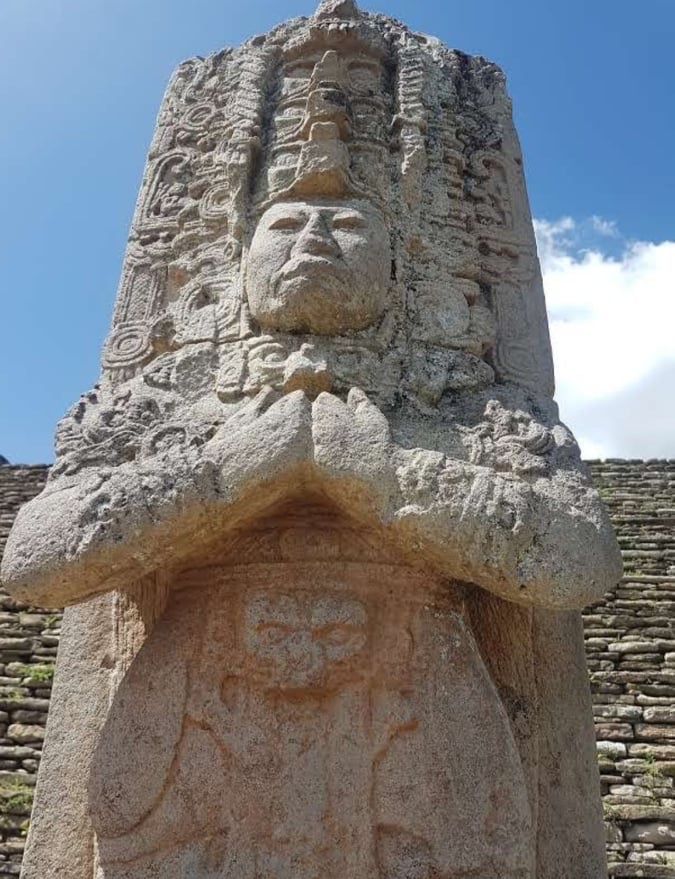
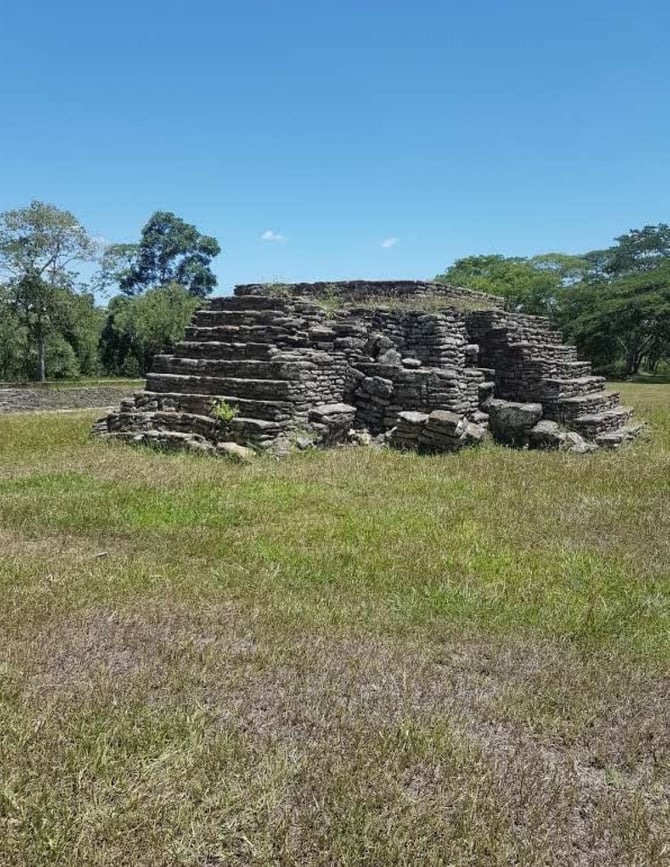
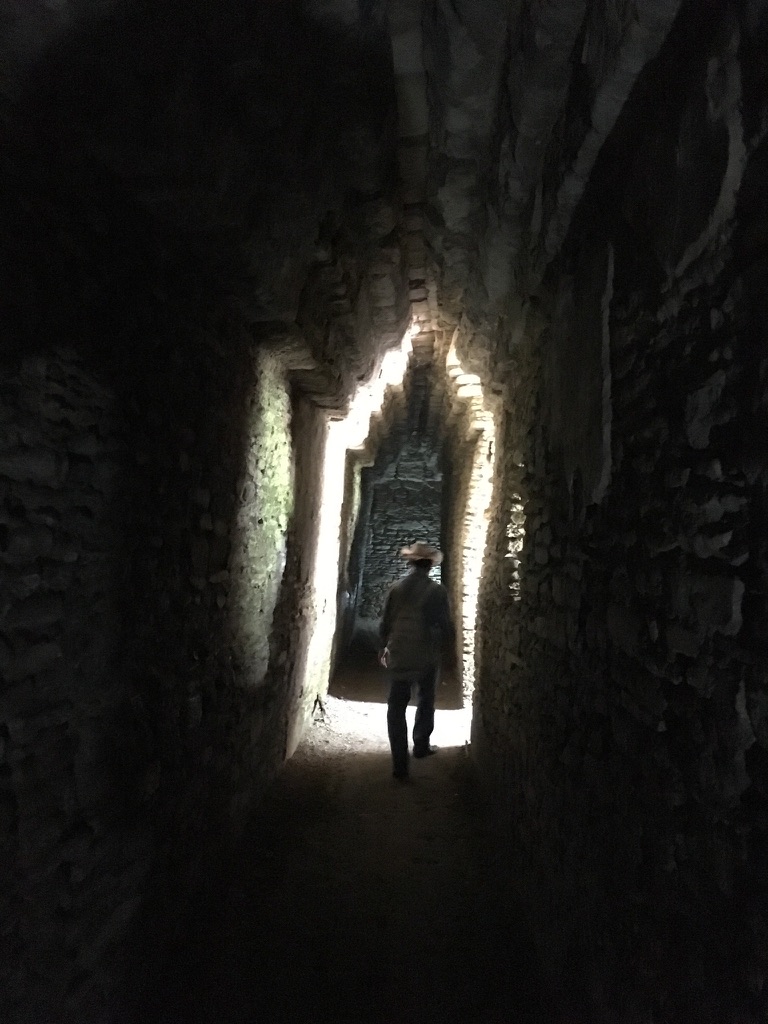
Overview of My Top #15 Maya sites
Click on their name to go to the respective post:
- 1. Copán, Honduras
- 2. Yaxchilán & Bonampak, Chiapas, México
- 3. Tikal, Guatemala
- 4. Palenque, Chiapas, México
- 5. Quiriguá, Guatemala
- 6. Kabah & Labná, Yucatán, México
- 7. Ek Balam, Yucatán, México
- 8. Yaxhá, Guatemala
- 9. Uxmal, Yucatán, México
- 10. Toniná, Chiapas, México
- 11. Cobá, Yucatán, México
- 12. Chichén Itzá, Yucatán, México
- 13. Tulum, Yucatán, México (under construction)
- 14. Calakmul, Yucatán, México (under construction)
- 15. Muyil, Yucatán, México (under construction)
For a complete overview of my personal favourites in one single post, go to: Top #15 Maya-sites
For an overview of all travel posts of my blog, go to: the Home Page.

